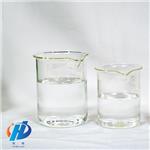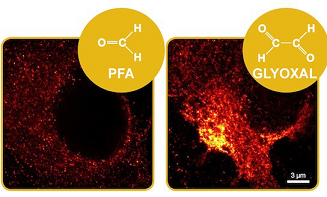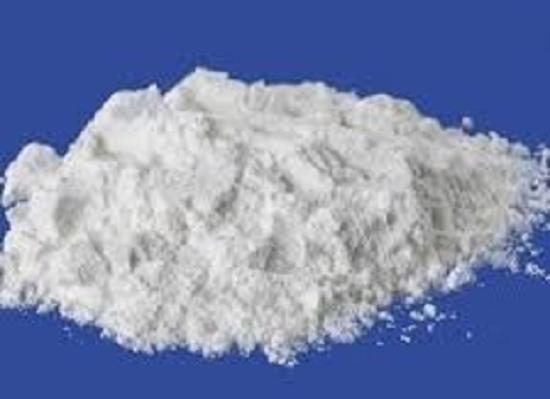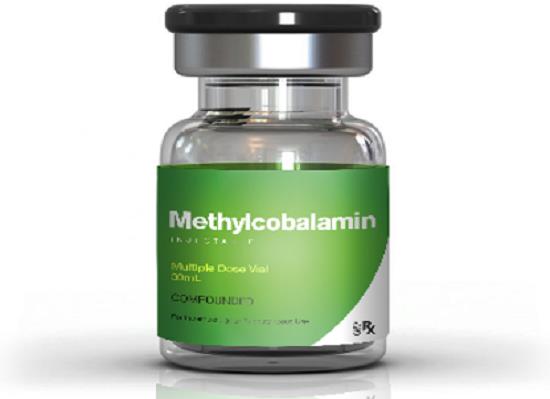Glyoxal: toxicology and applications
General Description
Glyoxal has been the focus of much research due to its toxicology and as a fixative agent in biological research. It has been associated with aging and various neurodegenerative diseases such as Alzheimer and Parkinson. Moreover, glyoxal is an intermediate product of cellular glycolysis that contributes to protein damage, particularly in diabetes. Despite its negative effects on cells, glyoxal has shown promise as a biofilm control agent on food-contact surfaces. One significant advantage of using glyoxal over formaldehyde in biological research is that it preserves RNA integrity without crosslinking RNA to proteins or forming stable RNA adducts. This makes RNA accessible and easier to work with after fixation. Consequently, researchers have embraced glyoxal fixation for better accuracy and reproducibility in their experiments.

Figure 1. Glyoxal
Toxicology
Neurodegenerative diseases
Glyoxal and methylglyoxal, containing two reactive carbonyl groups are examples of reactive electrophilic species. Although stress responses to reactive oxygen species and nitrogen species have been extensively studied, research on the response to reactive electrophilic species have emerged only recently. Glyoxal and methylglyoxal were reported to be associated with aging and diseases such as diabetes, Alzheimer's, and Parkinson's diseases. 1
Protein damage in diabetes
The non-enzymatic modification of proteins in hyperglycemia is a proposed mechanism of diabetic complications. Advanced glycation end products derived from hyperglycemia-induced reactive carbonyl species can target functionally critical protein residues and cause significant functional damage. While detection of total Advanced glycation end products levels may be unreliable in identifying damage to specific sites, recent research has focused on methylglyoxal as an intermediate of cellular glycolysis. However, new data suggests that glyoxal is also a major contributor to extracellular matrix damage in diabetes. This highlights the importance of identifying biomarkers and understanding the molecular basis of diabetic complications for effective diagnoses and treatments. 2
Cytotoxicity in kidney cells
While it is well known that glyoxal exacerbates the development and progression of diabetic nephropathy, the underlying mechanisms of its toxicity to human embryonic kidney (HEK293) cells were previously unknown. A study aimed to explore the molecular mechanisms behind glyoxal-induced cytotoxicity in HEK293 cells using network toxicology and cell biology experiments. The results showed that oxidative stress and advanced glycation end products (AGEs)/RAGE signaling pathways played a crucial role in the cytotoxicity induced by glyoxal. Glyoxal activated the AGEs-RAGE pathway, which caused an increase in cellular ROS levels and led to activation of the p38MAPK and JNK signaling pathways, resulting in cellular oxidative stress. In addition, glyoxal also caused activation of the NF-κB signaling pathway and increased expression of TGF-β1, indicating the induction of cellular inflammation. Furthermore, glyoxal caused cellular DNA damage accompanied by the activation of DNA damage response pathways. Finally, the mitochondrial apoptosis pathway was activated. 3
![Article illustration]() Applications
Applications
Biofilm control agents
Glyoxal (GO) and glycolic acid (GA) were studied for their potential to control biofilms formed by Bacillus cereus and Pseudomonas fluorescens on food-contact surfaces. A study compared the antibiofilm activity of GO and GA to that of benzalkonium chloride (BAC) and peracetic acid (PAA), which are commonly used biocides in industrial surface disinfection. The biocides were evaluated in terms of their impact on bacterial motility, culturability, biofilm removal and inactivation, as well as their ability to interfere with the biofilm components and limit biocide penetration through the biofilms through reaction-diffusion interactions. Results showed that bacterial motility was not affected by exposure to sub-inhibitory biocide concentrations. B.cereus biofilms were tolerant to BAC, GA, and GO, but more susceptible to PAA, while P.fluorescens biofilms were generally more susceptible to the biocides tested. GO and BAC were the most effective for biofilm removal, while high biofilm inactivation was caused by GA and PAA. Overall, biofilm components affected the antimicrobial activity of all the biocides. The study suggests that GO and GA have potential as antibiofilm agents, although their efficacy may be limited by physicochemical interactions with biofilm components. 4
Fixative
Glyoxal has become a popular alternative to formaldehyde as a fixation agent in biological research. Unlike formaldehyde, glyoxal does not crosslink RNA to proteins or form stable RNA adducts, which can make RNA inaccessible or difficult to work with after fixation. Therefore, using glyoxal for fixation allows for better preservation of RNA integrity and high-quality extraction for downstream analysis, such as RNA sequencing. Additionally, glyoxal is a highly compatible fixative that works well with various immunofluorescent staining methods. By replacing formaldehyde with glyoxal as the fixation agent, researchers can achieve more accurate and reproducible results while also simplifying their experimental protocols. Overall, the use of glyoxal for fixation has proven to be a valuable tool in the study of various biological processes and has become an increasingly popular choice among researchers in recent years. 5
Transcriptomic
RNA integrity is maintained through the process of glyoxal fixation, and RNA can be extracted by standard methods and processed into RNA-seq libraries using commercial kits. This simple method allows routine transcriptome analysis of highly purified cell populations and single cells, making it an effective tool for flow cytometry studies. The applicability of this approach has been validated by staining MCF-7 cells for the intracellular G2/M-specific antigen cyclin B1 and showing strong enrichment for G2/M-phase cells based on transcriptomic data. Switching to glyoxal fixation with RNA-compatible staining methods should facilitate routine transcriptomic analysis of sorted cells with only minor adjustments to existing protocols. 6
Reference
1. Lee C, Park C. Bacterial Responses to Glyoxal and Methylglyoxal: Reactive Electrophilic Species. Int J Mol Sci, 2017, 18(1):169.
2. Voziyan P, Brown KL, Chetyrkin S, Hudson B. Site-specific AGE modifications in the extracellular matrix: a role for glyoxal in protein damage in diabetes. Clin Chem Lab Med, 2014, 52(1):39-45.
3. Liu D, Chen J, Xie Y, Mei X, Xu C, Liu J, Cao X. Investigating the molecular mechanisms of glyoxal-induced cytotoxicity in human embryonic kidney cells: Insights from network toxicology and cell biology experiments. Environ Toxicol, 2022, 37(9):2269-2280.
4. Fernandes S, Gomes IB, Sim?es M. Antibiofilm activity of glycolic acid and glyoxal and their diffusion-reaction interactions with biofilm components. Food Res Int, 2022, 152:110921.
5. Criswell SL, Altman S, Peeler C, Drake T, Lazar C, Douglas S, DeJarnatt V. Glyoxal fixation: an immunohistochemistry assay evaluation, J Histotechnol. 2022, 45(2):77-84.
6. Channathodiyil P, Houseley J. Glyoxal fixation facilitates transcriptome analysis after antigen staining and cell sorting by flow cytometry. PLoS One, 2021, 16(1):e0240769.
);Related articles And Qustion
See also
Lastest Price from Glyoxal manufacturers

US $15.00/kg2024-04-27
- CAS:
- 107-22-2
- Min. Order:
- 1kg
- Purity:
- 99.912%
- Supply Ability:
- 10ton

US $3.00/kg2024-04-22
- CAS:
- 107-22-2
- Min. Order:
- 1kg
- Purity:
- 99.92%
- Supply Ability:
- 50000tons



